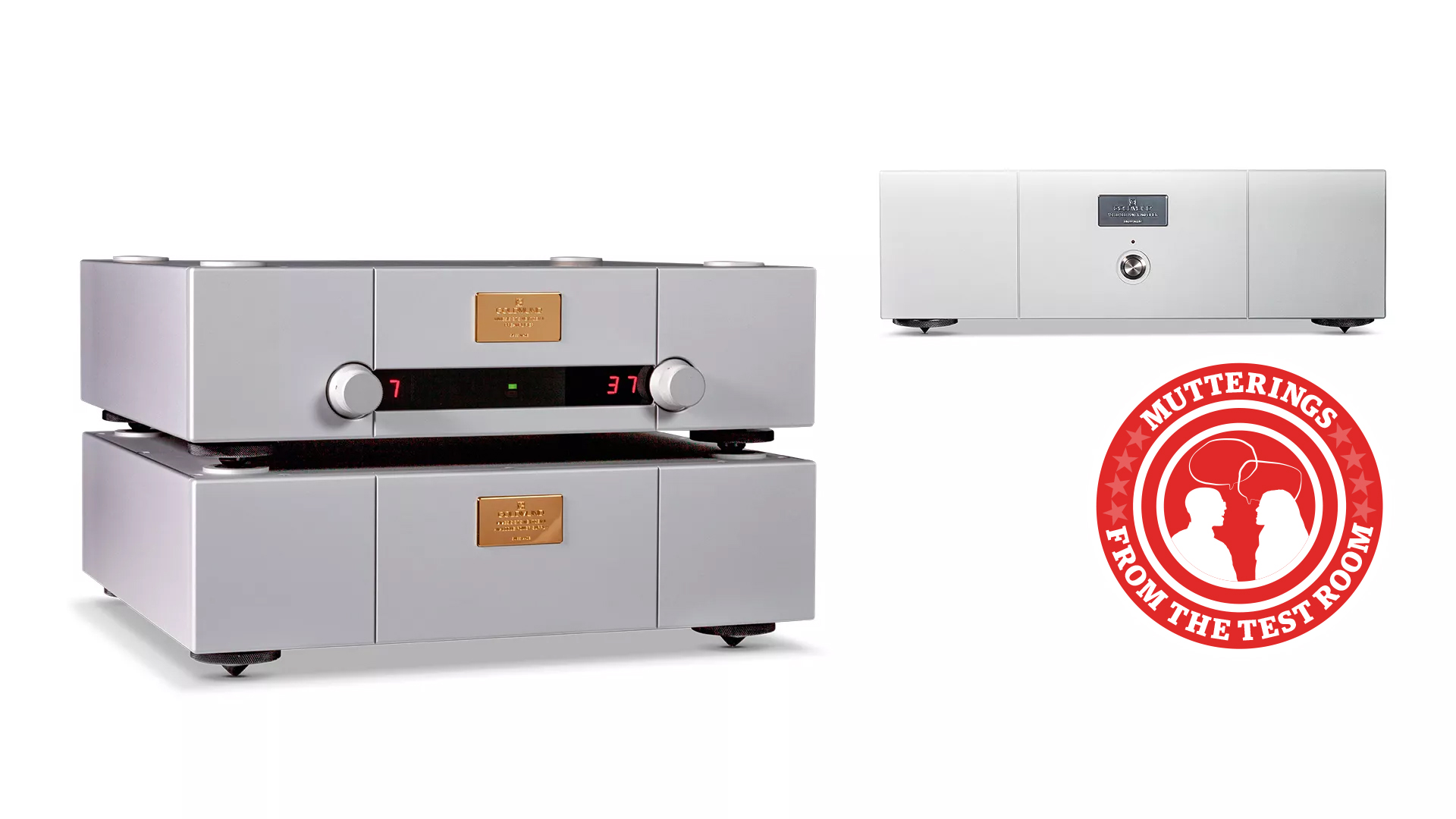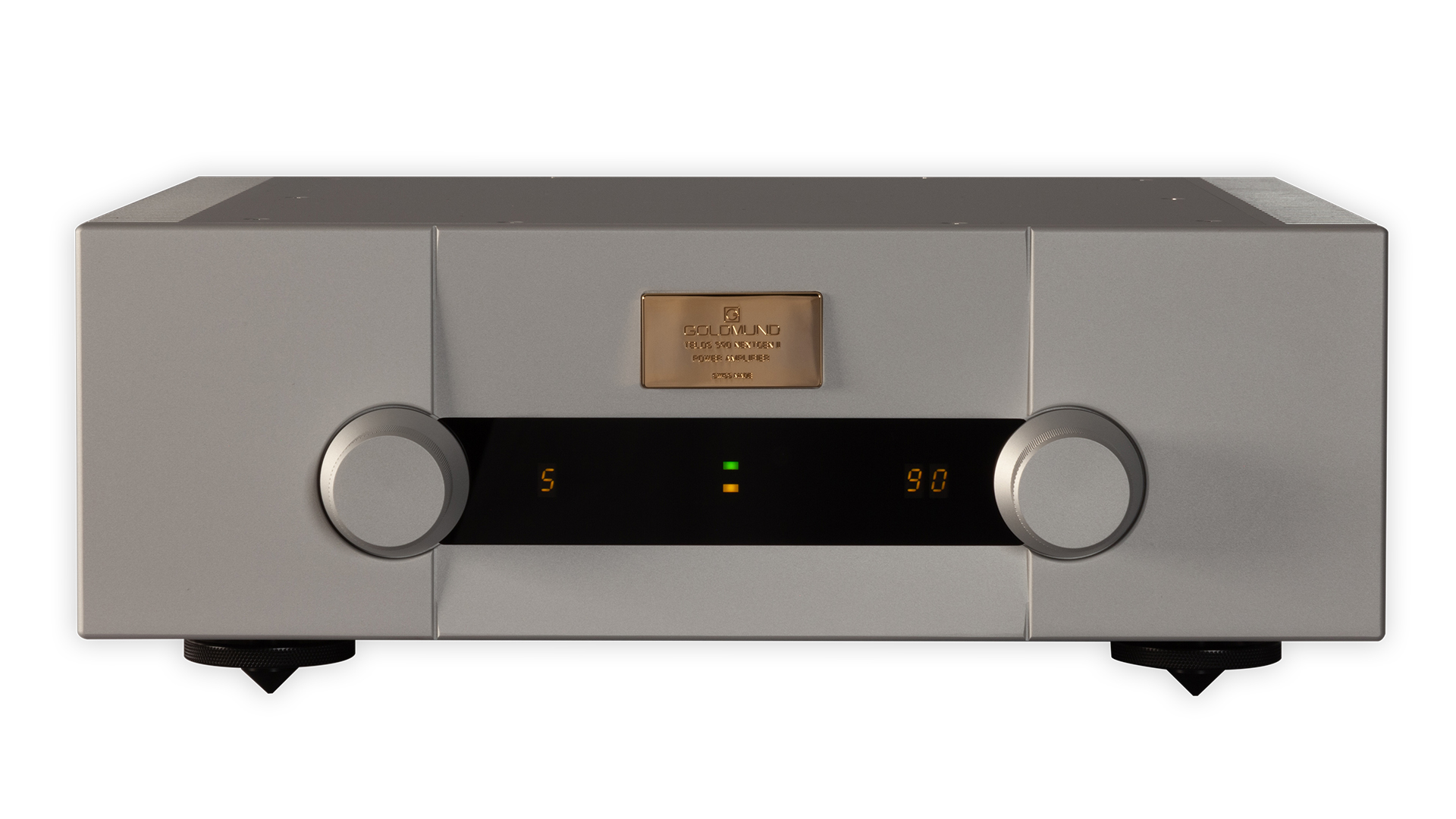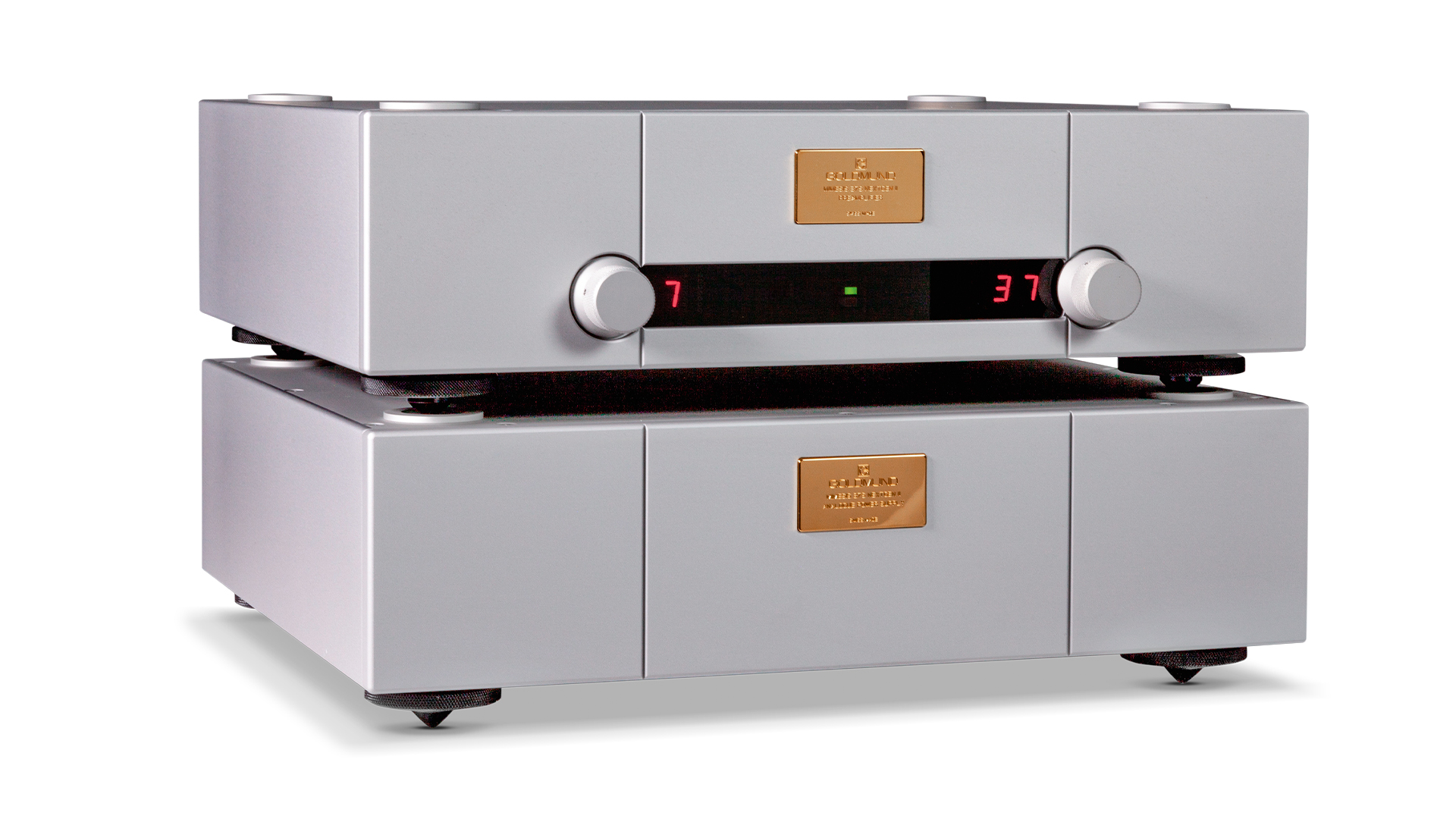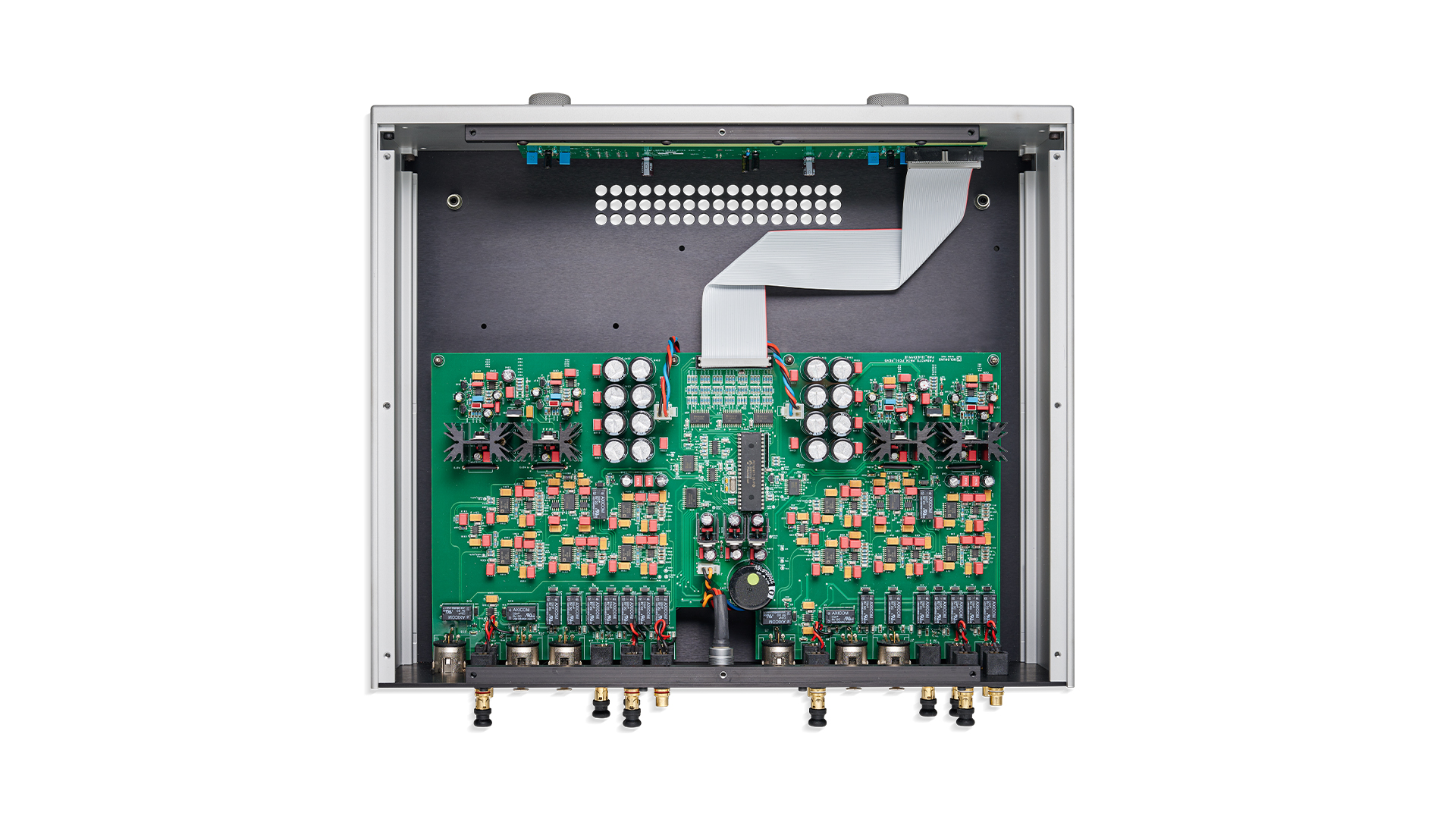
Reviews, by their very nature, are rigidly structured entities. We write an introduction to set the context, go over the features, build and performance of the product and then hope to tie it all up in a neat and succinct manner with the conclusion.
That’s fine as far as it goes, but there are things that we as a team at What Hi-Fi? discuss about a product that doesn’t always really fit into that tidy review structure. This ‘Mutterings From The Test Room’ column aims to shine a light on those musings, and this month's edition focuses on the importance of taking care of the little things when it comes to setup...
Case in point
We reviewed Goldmund’s excellent Mimesis 37S Next Gen/Telos300 a little while ago. Our conclusion was that it was a hugely capable high-end pre/power combination that in the right system can sound extraordinary. The pairing got the full five-star verdict despite a price tag that would look more appropriate on a premium car than any piece of hi-fi. To be more specific, this Goldmund pairing would set you back £44,000/$59,000/AU$80,000 should you want to buy it.

I'll let you in on a secret. That wholehearted endorsement certainly wasn’t a foregone conclusion, particularly given the elevated price point. For that kind of money we expect our socks to be blown off, not just with explosive dynamics or thunderous bass but also with a degree of naturalness and finesse that should be well beyond the reach of more affordable alternatives. Yet, around halfway through our testing process, having spent a number of weeks with the Goldmunds already, we were not sure this pairing could truly deliver.
We had excellent detail resolution, a neutral tonal balance and terrific stereo imaging. In all normal ‘hi-fi’ respects, the amplifier was brilliant... but the music just didn’t move us. We wanted to rock out to Bruce Springsteen and get lost in Arvo Part’s hypnotic Tabula Rasa, but it just wasn’t happening. And it wasn't anything to do with our mood. Was this truly the level of the Mimesis 37S NG/Telos 300 or were we missing something?
We have reviewed a number of Goldmund’s amplifiers in the past and always got great results. While it was possible that the company could have dropped the ball with these new products, we were not convinced that was the case. So, we set about checking our whole setup from the ground up.
The Goldmund amplifiers had been in use for a number of weeks, so they had certainly stabilised electrically, and running-in wasn’t an issue given that they were well used before coming to us.

We had the Mimesis Preamp on one of our Atacama rack’s shelves, with the power supply placed in the space below it. The power amplifier sat on its own platform around a metre away. We were using a pair of interconnects between the pre and power that was recommended by the UK distributor of the brand, and having compared them to alternatives nothing proved out of place there. Swapping our usual Chord Epic XL speaker cable to rivals from Vertere, Audioquest and Naim didn’t cast any light on the situation.
Our sources – the Naim ND555/555 PS DR and Technics SL-1000R/Kiseki Purpleheart MC – were checked using our usual reference Burmester 088/911 Mk III amplification, while the system’s Vertere interconnects were examined without revealing anything untoward. The same applied to our trusty ATC SCM 50 speakers.
We should say at this point that we always try a variety of speakers with any amplification to check for compatibility issues, so had already used Wilson Benesch’s brilliant A.C.T.3 Zero floorstanders and the Epos ES14N during the process. Did either of the alternative speakers click any better with the Goldmund pre/power combo? They did not.
A dead end, then? We routinely check the user manual before we test products to make sure we’ve installed the product properly and avoid any chance of missing out on an interesting feature, but we decided to have another look all the same.
Mystery solved
There was a small paragraph early on suggesting that the power supply shouldn’t be put below the preamp. We had taken that to mean ‘don’t stack them’, but taken literally, maybe the power unit, with all the magnetic fields it generates, could still influence the preamp’s performance despite there being a 10cm gap between them. Surely that couldn’t make much of a difference, could it?

There was a short umbilical cable between the two boxes but we still managed to move the outboard supply to the side of the preamp with around 30cm between them. This also moved the umbilical further away from some mains power cables we had as part of our set-up. Alas (and I really wish it wasn’t true), this small change transformed the sound of the Goldmunds. The combo became more expressive and displayed more verve. It was subtler too, rendering small nuances in voices and instruments that previously were not so clear. Was it a night and day difference? No, but it was enough to lift the Goldmund pairing from being something we admired to something we could now love.
A lesson learned
I think that the sheer transparency of our system made the negative effects of having the power supply so close more obvious than they would have been on lesser components, but I think the lesson still applies to every system, regardless of whether it is hi-fi or home cinema. Even the most minor things in setup can make a huge difference, and checking the manual for setup suggestions from the manufacturer (this is advice straight from the horse's mouth, after all) is always a good idea.
You have paid a lot of money for your system, so it makes sense to get the most from it by installing it properly. This could involve putting a turntable or CD player on a rigid low presence support that’s well away from the speakers, or getting exactly the right speaker cables to match your amp. We say it time and time again, but taking time to component match is always a good thing too. Ignore it at your peril.
We have penned many articles about how to optimise the performance from various parts of your system (some of which can be found below), and I can tell you from decades of experience that one loose spike on a floorstander can drop the performance of certain designs by the equivalent of a star on our ratings. After spending all that money on a five-star and/or award-winning product, why wouldn’t you want to get the most from it?
MORE:
How to choose the right speakers and get the best sound
How to best set up a turntable and a stereo amplifier







